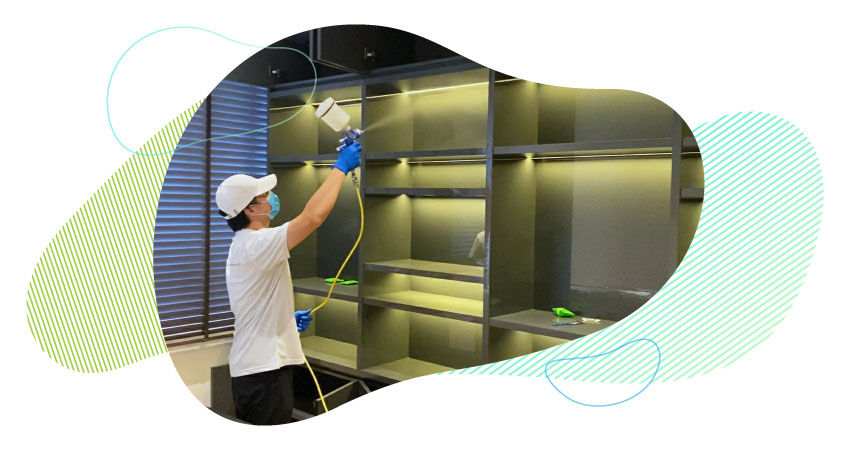What Air Purifier Companies Won’t Tell You About Formaldehyde Removal
- UC Fresh Air
- Aug 25
- 4 min read
Indoor air quality has become a buzzword in recent years, but not all conversations delve sufficiently into the topic. While everyone agrees that cleaner air is better, few people question what that means, especially when issues like formaldehyde removal in Singapore highlight the complexity of achieving truly safe indoor environments.
Most air purifiers don't effectively remove formaldehyde, one of the most stubborn indoor pollutants. This blog unpacks what most brands gloss over and why it matters, especially if you've recently renovated or furnished your home.
The Hidden Villain in "Fresh" Indoor Spaces
It sounds harmless after all, formaldehyde is just another chemical name, right? Not quite. Formaldehyde is a volatile organic compound (VOC) that can linger in the air long after renovation work is done. It off-gasses from furniture, laminates, adhesives, and even curtains. It's a silent irritant, linked to headaches, throat discomfort, and in severe cases, respiratory problems.
Consumers often believe any high-end purifier will handle the problem. Here's where reality checks in: most purifiers focus on dust, pollen, and smoke particles. Formaldehyde, however, is a gas. It slips through HEPA filters like water through a sieve. This is where specialised formaldehyde removal services in Singapore step in, as traditional solutions aren't designed for this purpose.
Who Should Worry About Formaldehyde the Most?
Not every home or office faces the same risk. Formaldehyde levels spike in spaces with:
Brand-new furniture or flooring
Recently painted walls
Pressed wood products like MDF or plywood
Strong-smelling adhesives and coatings
Urban environments, such as Singapore, exacerbate the issue. Apartments with limited ventilation trap VOCs inside. Families with young children or elderly members are particularly vulnerable because their respiratory systems are more sensitive.
Professionals offering air purifier service know these patterns well, but most retailers won't mention them. Why? Because admitting it means acknowledging their machines alone aren't enough.
What's Missing From Standard Purifiers?
HEPA filters dominate marketing campaigns, and for good reason; they're excellent at trapping particles. Unfortunately, formaldehyde isn't a particle; it's a gas molecule. Activated carbon filters do better, but only when engineered for extended gas-phase adsorption. Many consumer-grade models contain a token amount of carbon, enough for odours but not for consistent chemical capture.
Some brands hint at "VOC reduction" without clarifying the extent to which it is achieved. This leaves buyers thinking they've solved the problem when, in reality, they've only scratched the surface of it. Effective solutions typically involve a combination of chemical absorbents, catalytic oxidation, and sometimes specialised coating techniques, which are more commonly found in dedicated formaldehyde removal in Singapore than in off-the-shelf purifiers.
When Does Formaldehyde Become a Long-Term Concern?
One common misconception is that formaldehyde fades away after a few weeks. While odour may reduce, emissions can last for months or even years, depending on humidity and temperature. Hot, humid weather accelerates off-gassing, leading to prolonged exposure in tropical climates.
Routine air purifier service can keep filters fresh, but it won't magically eliminate a pollutant that the filter wasn't designed to capture in the first place. That's why residents often turn to specialised treatments months after moving in, usually when headaches and irritation refuse to go away.
Where Can True Removal Take Place?
Indoors because that's where formaldehyde hides, but the real question is, where do you find solutions that work? In Singapore, companies like UC Fresh Air use professional-grade methods to target VOCs directly.
These include catalytic materials that break down formaldehyde into harmless components and high-capacity adsorption systems tailored for gas pollutants.
This process often happens in:
Newly renovated condos
Office fit-outs before employees return
Retail outlets prepping for customer traffic
Unlike portable purifiers, these services treat the entire space, ensuring formaldehyde doesn't linger in corners or under furniture.
Why Aren't Purifier Brands Talking About This?
There's a marketing reason behind the silence. Admitting limitations could hurt sales. It's easier to showcase sleek designs and HEPA certifications than to explain why gases require different technology altogether. Consumers assume "air purifier" equals "all problems solved," and brands rarely correct that assumption.
Some companies do offer VOC features, but they come at premium prices. Even then, the specifications aren't always precise, leaving buyers unsure of what they're paying for.
Meanwhile, providers of formaldehyde removal services in Singapore position themselves as specialists, not gadget sellers. They categorise VOCs as a separate category of indoor pollution because that's precisely what they are.
How Do You Improve Indoor Air Quality?
Start with awareness. Knowing that formaldehyde can persist helps set realistic expectations. Before buying another purifier, ask what it's certified to remove. Look for independent lab tests, not just marketing claims.
Next, consider a layered approach:
Improve ventilation when possible
Schedule professional air purifier service to maintain your existing units
For formaldehyde, invest in targeted treatments rather than hoping a HEPA filter will do the job.
Specialised solutions from companies like UC Fresh Air combine multiple technologies to neutralise VOCs at the source. This isn't about replacing purifiers, it's about filling the gap they leave behind.
In a Nutshell
Air purifiers play an essential role, but they're not a cure-all for every indoor pollutant. Formaldehyde removal in Singapore demands strategies beyond a standard HEPA filter, especially in new or recently renovated spaces.
So why does this matter now? Because urban lifestyles, dense housing, and frequent home makeovers mean more VOC exposure than ever before. Understanding what your devices can and can't do could be the difference between temporary comfort and long-term health.
If indoor air quality is on your mind, go beyond the basics. Ask the right questions, demand clear answers, and don't settle for assumptions. Whether through regular air purifier service or advanced treatments for VOCs, taking an informed approach ensures the air you breathe is as safe as it feels.
.png)




.png)



Comments